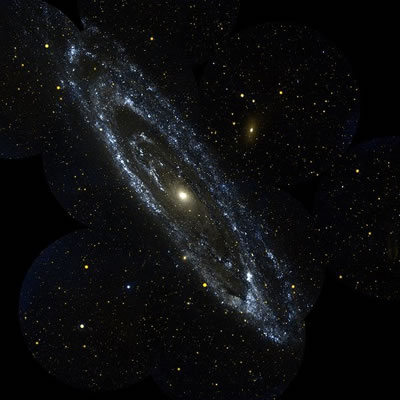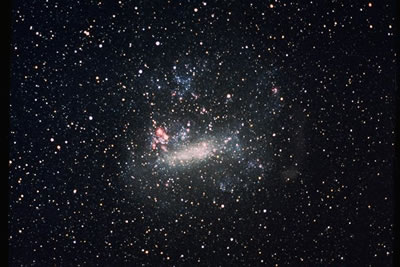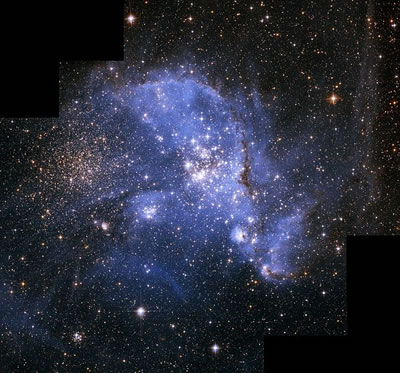Our galaxy, the Milky Way, is part of a group of galaxies known as the Local Group.
The Local Group consists of about 30 galaxies, of which three, including the Milky Way, are spiral galaxies. The Local Group also contains other types of galaxies, including elliptical galaxies, irregular galaxies and dwarf galaxies.
It occupies an egg-shaped volume of space and is 10 million light-years in diameter.
The largest galaxies are the Milky Way and the Andromeda Galaxy.
 Andromeda Galaxy
Andromeda Galaxy
The Andromeda Galaxy is the nearest and brightest of the spiral galaxies.
It has about the same mass as the Milky Way and is about 2,500,000 light-years from it.
You can see the Andromeda Galaxy if you look for the Great Square in the constellation of Pegasus, the winged horse. This is a square of four bright stars, larger than the bowl of the Big Dipper.
It comes over the eastern horizon in August. The Andromeda Galaxy can be seen most easily in the autumn, when it appears high in the southern sky. It disappears below the western horizon in February.
In fact, only three of the stars are part of Pegasus.
The star in the northeast corner of the square belongs to the constellation of Andromeda, which stretches upward and to the east.
If you look a little to the east of this star and a little higher in the sky, you will see what appears to be a fuzzy star. That tiny spot is the Andromeda Galaxy.
The Milky Way and the Andromeda Galaxy have about the same mass.
Canis Major Dwarf Galaxy
The Canis Major Dwarf Galaxy, which was discovered in 2003, is the Milky Way's nearest neighbor. This irregular galaxy is 42,000 light-years from the center of the Milky Way.
Sagittarius Dwarf Elliptical Galaxy
The next closest galaxy is the Sagittarius Dwarf Elliptical Galaxy, which was discovered in 1994. It is about 50,000 light-years from the Milky Way's core.
 Magellanic Clouds
Magellanic Clouds
For a long time, the galaxies that were thought to be closest to our own were irregular galaxies knows as the Small and Large Magellanic Clouds.
The Magellanic Clouds are the nearest to the Milky Way after the Canis Major Dwarf Galaxy and the Sagittarius Dwarf Elliptical Galaxy.
 The Large Magellanic Cloud is about 160,000 light years away and the Small Magellanic Cloud is about 200,000 light-years away.
The Large Magellanic Cloud is about 160,000 light years away and the Small Magellanic Cloud is about 200,000 light-years away.
The Magellanic Clouds, which can be seen from the southern hemisphere, were first noticed by the Portuguese explorers of the sixteenth century as their ships approached the Cape of Good Hope. They called them "Cape Clouds".
Astronomers later named them after Ferdinand Magellan, the explorer who led the first expedition to sail around the Earth.
To the unaided eye, the Magellanic Clouds look like pieces of the Milky Way that have broken loose.
The Large Magellanic Cloud contains one of the brightest stars known to astronomers, S Doradus. Despite its luminosity, because it is so far way, S Doradus cannot be seen with the naked eye.